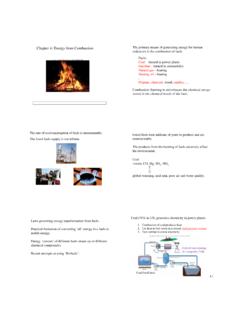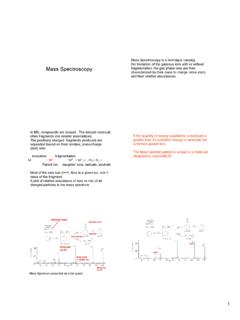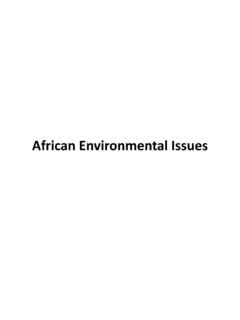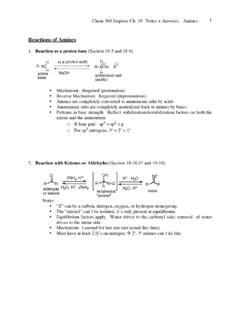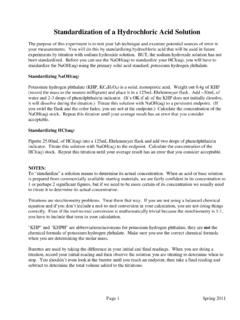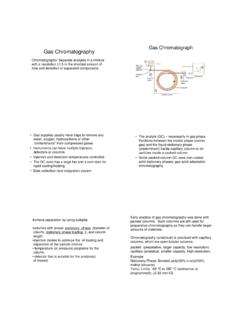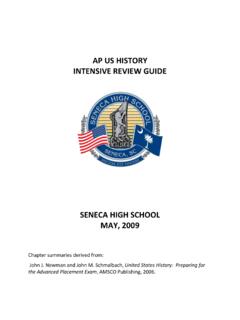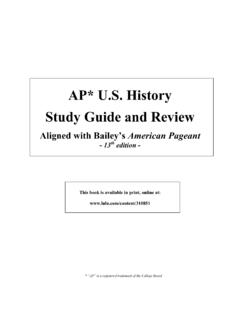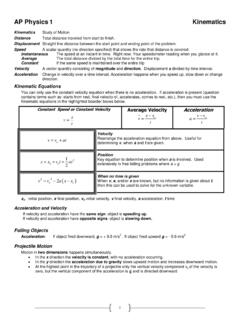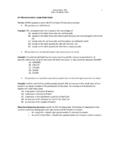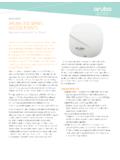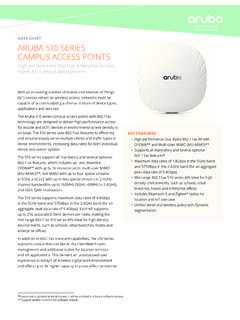Transcription of Big-Picture Introductory Conceptual Questions
1 1 General Chemistry II Jasperse Chemical equilibria. Extra Practice Problems General Types/Groups of problems: Equilibrium Conceptual p1 Using Ice: Generic, Then Real But Simple Numbers p8 Writing the Equilibrium Constant p3 Solving for K given Initial and at Least one Equilibrium Concentration p9 Manipulations of K: Reversing or Multiplying p5 Solving for Equilibrium Concentrations Using Ice, Given K p10 Solving for K Given All Equilibrium Concentrations p6 LeChatelier s Principle, Q, and Responses to Disrupted Equilibria p12 Solving for an Equilibrium Concentration Given K and Other Equilibrium Concentrations p7 Answers p15 Big-Picture Introductory Conceptual Questions 1. Which of the following is true for a chemical reaction at equilibrium? a. only the forward reaction stops b. only the reverse reaction stops c. both the forward and reverse reactions stop d.
2 The rate constants for the forward and reverse reactions are equal e. the rates of the forward and reverse reactions are equal 2. Which of the following is true regarding the concentration of products, for a chemical reaction that is already at equilibrium, assuming no disruptions to the equilibrium? a. The concentrations of products will not change because there are no more reactants. b. The concentrations of products will not change because the limiting reagent is gone. c. The concentrations of products will not change because the forward and reverse rates are equal. d. The concentrations of products will change continually because of reversibility. 3. Which of the following are equal for a chemical system at equilibrium? If all are equal, answer E. a. the concentrations of reactant and products are equal b. the rate constants for the forward and reverse reactions are equal c.
3 The time that a particular atom or molecule spends as a reactant and product are equal d. the rate of the forward and reverse reaction e. all of the above are equal 4. A chemical equilibrium may be established by starting a reaction with _____ a. reactants only. d. any quantities of reactants and products. b. products only. e. all the above c. equal quantities of reactants and products. 5. An equilibrium that strongly favors products has _____ a. a value of K << 1. d. a value of Q << 1. b. a value of K >> 1. e. K = Q. c. a value of Q >> 1. 2 6. The equilibrium constant for the acid ionization of mercaptoethanol (HSCH2CH2OH) is x 10 10. HSCH2CH2OH(aq) H+(aq) + SCH2CH2OH (aq) K = x 10 10 Which of the following statements is true regarding this equilibrium? I. The reaction is product favored. II. The reaction is reactant favored. III.
4 Equilibrium lies far to the right. IV. Equilibrium lies far to the left. a. I and III b. I and IV c. II and III d. II and IV e. None are true, as the concentrations of reactants and products are comparable. 7. The equilibrium constant for the formation of hydrogen iodide from hydrogen and iodine is 45 at a certain temperature. H2(g) + I2(s) 2 HI(g) K = 45 Which of the following is true regarding this equilibrium? I. The reaction is product favored. II. The reaction is reactant favored. III. Equilibrium lies to the right. IV. Equilibrium lies to the left. a. I and III b. I and IV c. II and III d. II and IV e. None are true, as the concentrations of reactants and products are essentially the same. 8. If the reaction quotient Q has a smaller value than the related equilibrium constant, K, _____ a. the reaction is at equilibrium. b. the reaction is not at equilibrium, and will make more products at the expense of reactants.
5 C. the reaction is not at equilibrium, and will make more reactants at the expense of products. d. the value of K will decrease until it is equal to Q. 9. If the reaction quotient Q has a larger value than the related equilibrium constant, K, _____ a. the reaction is at equilibrium. b. the reaction is not at equilibrium, and will make more products at the expense of reactants. c. the reaction is not at equilibrium, and will make more reactants at the expense of products. d. the value of K will increase until it is equal to Q. 10. If the equilibrium is established by initially adding mol each of A and B to a 1L container, then which of the following must be true once the mixture achieves equilibrium? A + 2B 2C K = 320 a. [A] = [B] b. [A] = [B] = [C] c. [B] = 2[C] d. [A] > [B] e. [A] < [B] 3 Writing the Equilibrium Constant.
6 Reminder: solutes (aq) or gases (g) appear; solvents (l) or solids (s) do not. 11. Write an expression for the equilibrium constant for the formation of two moles of ammonia gas (NH3) from nitrogen and hydrogen in their standard states. N2(g) + 3 H2(g) 2 NH3(g) 12. Write the correct Kc expression for the following reaction? C3H8 (g) + 5O2(g) 3CO2(g) + 4H2O(g) 13. Write an expression for the equilibrium constant for this reaction. N2O4(g) + O3(g) N2O5(s) + O2(g) 14. For the reaction 2A + B 2C the appropriate form for the equilibrium constant expression is: a. [A][B]2/[C] b. [A]2[B]/[C]2 c. [C]2/[A]2[B] d. [A][B]2[C] e. none of the above 15. Write the equilibrium expression for the reaction Zn2+(aq) + 2 NH3(aq) Zn(NH3)2+(aq) 16. Write an expression for the equilibrium constant for this reaction. Ca(OH)2(s) + 2H+(aq) 2H2O(l) + Ca2+(aq) 4 17.
7 Write an expression for the equilibrium constant for this reaction. NH4CO2NH2(s) 2NH3(g) + CO2(g) 18. Write an expression for the equilibrium constant for this reaction. Ti(s) + 2Cl2(g) TiCl4 (l) Dumb and Silly ones! J 19. Identify the equilibrium expression for the following reaction: boy + girl couple 20. Write the equilibrium expression for the following reaction, assuming homogeneity: fool(money)10 fool + 10 money 5 Manipulations of K: Reversing or Multiplying or Both 21. For the chemical equilibrium A + 2B 2C, the value of the equilibrium constant, K, is 10. What is the value of the equilibrium constant for the reaction written in reverse? 2C A + 2B K = ??? Given that: A + 2B 2C K = 10 a. d. 100 b. 10 e. 10 c. 1 22. The equilibrium constant for the formation of calcium carbonate from the ions in solution is 108 according to the reaction: Ca2+(aq) + CO32 (aq) CaCO3(s) K = 108 What is the value of the equilibrium constant for the reverse of this reaction?
8 CaCO3(s) Ca2+(aq) + CO32 (aq) K = ????? a. the same, 108 d. 10 9 b. 108 e. 109 c. 10 8 23. For the chemical equilibrium A + 2B 2C, the value of the equilibrium constant, K, is 10. What is the value of the equilibrium constant for the following reaction? 2A + 4B 4C K = ??? Given that: A + 2B 2C K = 10 a. d. 400 b. e. 100 c. 40 24. For the chemical equilibrium A + 2B 2C, the value of the equilibrium constant, K, is 10. What is the value of the equilibrium constant for the following reaction? 4C 2A + 4B K = ??? Given that: A + 2B 2C K = 10 a. d. 20 b. e. 100 c. 25. Given: A + B 2C K = x 10-3. What is K for the reaction 2C A + B K = ??? 6 K Calculations: Solving for K when all Equilibrium Concentrations are Given 26. Calculate K for the following reaction given the following equilibrium concentrations of H2, CO, and H2O.
9 PCl5(g) PCl3(g) + Cl2(g) K = ?? Equilibrium Concentrations (M): .200 .040 .080 27. Calculate K for the following reaction given the following equilibrium concentrations of H2, CO, and H2O. C(s) + H2O(g) CO(g) + H2(g) K = ?? Equilibrium Concentrations (M): .030 .030 28. For the following hypothetical equilibrium, what is the value of the equilibrium constant if the concentrations at equilibrium are as shown? A(g) + 2 B(g) C(g) Equilibrium Concentrations (M): 10 5 10 2 10 3 K = ?? a. d. 108 b. e. 103 c. 105 29. For the following hypothetical equilibrium, what is the value of the equilibrium constant if the concentrations at equilibrium are as shown? A(aq) + 2 B(aq) 2C(aq) + D(aq) 10 5 10 2 10 3 10 2 7 K Calculations: Solving for an Equilibrium Concentration when K and all Other Equilibrium Concentrations are Given 30.
10 What is the equilibrium concentration of Br2 if [HBr] = M and [H2] = M at equilibrium? H2(g) + Br2(g) 2 HBr(g) K = 31. What is the equilibrium concentration of D? A(aq) + B(s) 2C(aq) + D(aq) K = x 10-6 10 4 10 2 ??????? 32. What is the equilibrium concentration of C? A(g) + B(g) 2C(g) + D(g) K = x 10-7 10 4 ??????? 10 3 8 Using Ice: Generic, Then Real But Simple Numbers 33. In the ICE table started for calculating equilibrium concentrations of the reaction shown, the three terms in the change row are _____ M2+ + 2L ML2+ [M2+] [L] [ML4+] I M M 0 M C _____ _____ _____ E _____ _____ _____ a.

